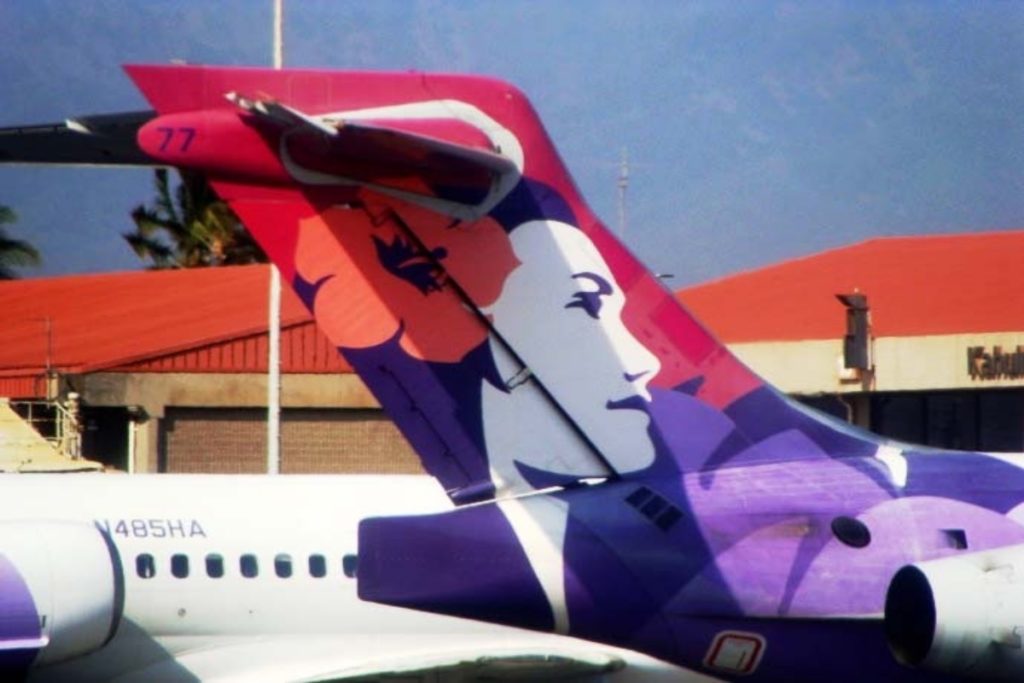Hawaiian Airlines Flights Help Measure Climate Change
 Travelers boarding Hawaiian Airlines aircraft on their flights to and from the Hawaiian Islands are now also helping to support an innovative research project that will measure climate change and air quality worldwide.
Travelers boarding Hawaiian Airlines aircraft on their flights to and from the Hawaiian Islands are now also helping to support an innovative research project that will measure climate change and air quality worldwide.
Last month, one of Hawaiian’s A330 wide-body aircraft equipped with scientific instruments started monitoring the health of the Earth’s atmosphere while carrying guests on its regularly scheduled
transpacific routes.
The partnership between Hawaiian and the In-service Aircraft for a Global Monitoring System—the first of its kind for a U.S. carrier—gives scientists real-time access to pollution levels in vast expanses of the Pacific where air quality samples have been difficult to collect, until now.
“Climate change carries significant consequences, particularly for Hawai‘i and our Pacific Island neighbors, so we are honored to join this important research project,” said Hawaiian Airlines COO Jon Snook. “As we continue to introduce millions of guests each year to Hawai‘i’s spectacular beauty, it’s gratifying to know our flights are also providing crucial data to the scientific community and meteorological agencies so we can better understand and address weather changes.”
Hawai‘i’s remote location in the heart of the Pacific Ocean and the islands’ pristine environment already yield valuable benchmark data on natural levels of harmful air pollutants, according to IAGOS.
The Mauna Loa Observatory, a premier research facility atop the Hawai‘i Island volcano, has continuously gathered and analyzed greenhouse gases since the 1950’s. Now, in addition to data from Mauna Loa and satellites, scientists can cross reference air samples captured by Hawaiian Airlines flights to validate and build weather models.
Hawaiian’s A330 aircraft, bearing registration N384HA, was outfitted with the IAGOS equipment earlier this year by technicians in Brisbane, Australia. Activated on Oct. 23, the system is located under the cockpit and attached to probes in the front-left fuselage that autonomously perform atmospheric air samples from take-off to landing and record key high-altitude greenhouse gas measurements. They also retrieve information about icing conditions that may be useful in aircraft safety studies.
Scientists predict Hawaiian’s system will generate invaluable metrics thanks to the carrier’s broad network of non-stop flights extending from Australia, New Zealand, American Samoa and Tahiti in the South Pacific, to China, South Korea, Japan and the United States (including 10 western U.S. gateways and New York) in the North Pacific.
“Hawaiian Airlines is now playing a leading role in the monitoring of climate change,” said Professor Jean-Marie Flaud, president of IAGOS.
“The effort being taken on by Hawaiian Airlines in support of IAGOS provides measurements over much of the Pacific Ocean where we have had few, and will add significantly to improving understanding of changes in the Earth’s climate, making better weather forecasts, and ensuring recovery of stratospheric ozone,” said James Butler, director of NOAA’s Global Monitoring Division and chairman of the IAGOS Science Advisory board.
The European-based IAGOS is a not-for-profit association under the co-coordination of the Centre Nationnal de la Recherche Scientifique in France and Forschungszentrum Juelich in Germany. Its members include leading research organizations, universities and weather services from Germany, France and the United Kingdom.
The program observes atmospheric data to better understand transcontinental pollution and validate air quality and climate models. Its information is used by about 200 universities or institutes in Europe, the United States, Japan, South America, India and China.
Hawaiian’s participation in IAGOS aligns with the carrier’s ongoing commitment to reduce the impact of aviation on the environment. Hawaiian is investing in fuel-efficient aircraft by adding 18 new narrowbody Airbus A321neos. The mid-range A321neo lowers fuel burn and carbon emissions by 16% over previous generation aircraft. Last year, the airline also conducted two demonstration flights to Honolulu from Brisbane and Auckland using a series of gate-to-gate environmental best practices outlined by the Asia and Pacific Initiative to Reduce Emissions (ASPIRE).
For more information and to track the movement of Hawaiian’s IAGOS aircraft in real time, visit iagos.org.
Additional information is available at HawaiianAirlines.com.






